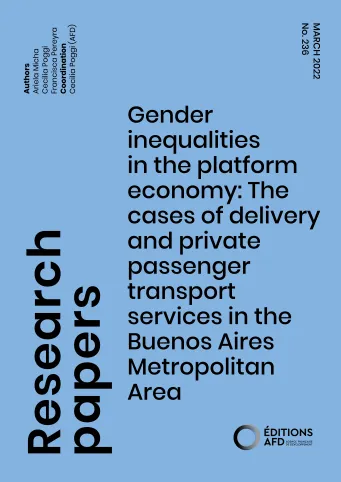Share the page
Gender inequalities in the platform economy: The cases of delivery and private passenger transport services in the Buenos Aires Metropolitan Area
Published on

This article inspects how the expansion of the platform economy affects gender inequalities, in some new forms as well in reinforcing pre-existing ones. It focuses on two platform occupations in the Buenos Aires Metropolitan Area: ride-hailing and delivery services. First, it explores the ways in which the platform economy constitutes a welcoming environment for female workers. Second, female versus male performance is assessed in terms of hours worked and earnings. Using a combination of qualitative and quantitative approaches it performs a gender gap analysis via linear regression. The article finds that platforms are facilitating an increase in female participation due to three main factors: the impossibility of finding another job, the impersonal recruiting mechanisms and time flexibility offered by platforms. This trend still implies significant gender gaps. The analysis suggests that the differentiated economic performance of male and female riders and drivers is mainly associated to on-the-job characteristics that are reinforced by algorithmic bias in the platform. Women experience more restrictions in terms of when and where they can work, as location and time choices are both constrained by care responsibilities and are also due to the subjective perception of exposure to insecurity and harassment during the work shift.
Useful Information
-
Authors
-
Ariela MICHA, Francisca PEREYRA, Cecilia POGGI
-
Coordinators
-
Edition
-
236
-
Number of pages
-
35
-
ISSN
-
2492 - 2846
-
Collection
-
Research Papers
